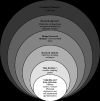Cross-sectional study protocol to assess ultraviolet radiation exposure among military outdoor workers in Lohatla, Northern Cape Province of South Africa
- PMID: 39773804
- PMCID: PMC11749638
- DOI: 10.1136/bmjopen-2023-083811
Cross-sectional study protocol to assess ultraviolet radiation exposure among military outdoor workers in Lohatla, Northern Cape Province of South Africa
Abstract
Introduction: The sun is one of the primary natural sources of ultraviolet radiation (UVR) and a known human carcinogen. It has been related to melanoma and several skin cancers, such as squamous cell carcinoma and basal cell carcinoma. Non-melanoma skin cancers are prevalent in South Africa, with high reported incidence rates in both genders. Due to its diversified population, South Africa experiences extreme ultraviolet index (UVI) levels, reaching 13 in the summer (a UVI of 11+ is considered extreme). Most summer workdays expose outdoor workers to repeated UVR exposure, which can lead to health risks like sunburn, premature ageing, cataracts, and an increased risk of skin cancer. This study aims to evaluate UV radiation exposure among outdoor military workers.
Methods and analysis: A cross-sectional quantitative study will occur at the Lohatla military base in Kathu, Northern Cape province of South Africa, using personal electronic dosimeters for solar UVR assessment. Additionally, a self-administered questionnaire will assist in assessing health effects and perceived exposure behaviours. The study addresses a critical public health concern, exploring significant risks associated with UVR exposure among outdoor military workers across different demographics.
Ethics and dissemination: The ethical approval for this study was obtained from the Health Sciences Research Committees of the University of Free State (UFS-HSD2023/1227/2811). The confidential data will be accessed by the named researchers and stored in secure password-protected platforms. In addition, the findings will be disseminated through high-impact publications in various formats to government departments and the broader scientific community.
Keywords: EPIDEMIOLOGY; Health Surveys; OCCUPATIONAL & INDUSTRIAL MEDICINE; PUBLIC HEALTH.
© Author(s) (or their employer(s)) 2025. Re-use permitted under CC BY-NC. No commercial re-use. See rights and permissions. Published by BMJ Group.
Conflict of interest statement
Competing interests: None declared.
Similar articles
-
Health Risks Associated With Excessive Exposure to Solar Ultraviolet Radiation Among Outdoor Workers in South Africa: An Overview.Front Public Health. 2021 Apr 28;9:678680. doi: 10.3389/fpubh.2021.678680. eCollection 2021. Front Public Health. 2021. PMID: 33996735 Free PMC article. Review.
-
Digitally measuring solar ultraviolet radiation in outdoor workers: A study protocol for establishing the use of electronic personal dosimeters in Portugal.Front Public Health. 2023 Mar 31;11:1140903. doi: 10.3389/fpubh.2023.1140903. eCollection 2023. Front Public Health. 2023. PMID: 37064705 Free PMC article.
-
Levels of Occupational Exposure to Solar Ultraviolet Radiation in Vancouver, Canada.Ann Occup Hyg. 2016 Aug;60(7):825-35. doi: 10.1093/annhyg/mew037. Epub 2016 Jun 7. Ann Occup Hyg. 2016. PMID: 27279636
-
Different outdoor professions have different risks - a cross-sectional study comparing non-melanoma skin cancer risk among farmers, gardeners and mountain guides.J Eur Acad Dermatol Venereol. 2018 Oct;32(10):1695-1701. doi: 10.1111/jdv.15052. Epub 2018 May 27. J Eur Acad Dermatol Venereol. 2018. PMID: 29806193
-
Solar Radiation Exposure and Outdoor Work: An Underestimated Occupational Risk.Int J Environ Res Public Health. 2018 Sep 20;15(10):2063. doi: 10.3390/ijerph15102063. Int J Environ Res Public Health. 2018. PMID: 30241306 Free PMC article. Review.
References
-
- Wolf TS, Kenney LE, Larry KW. Ultraviolet Radiation Exposure. Risk Prot Mil Out Athl. 2020 doi: 10.1249/JSR.0000000000000702. - DOI
MeSH terms
LinkOut - more resources
Full Text Sources
Medical

